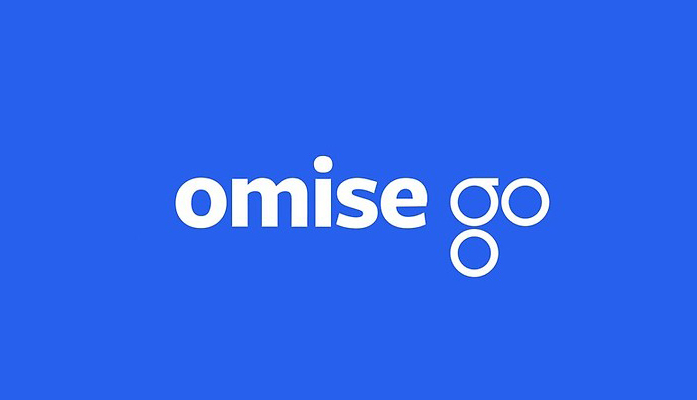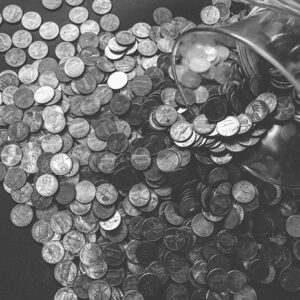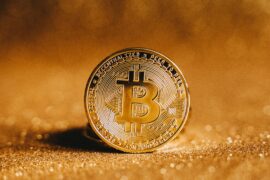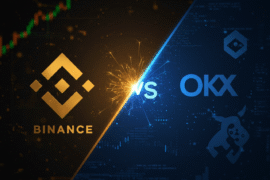This article may contain references to products or services from one or more of our advertisers or partners. We may receive compensation when you click on links to those products or services. Nonetheless, our opinions are our own.

Updated by Albert Fang
What is OmiseGO?
Founded by a Southeast Asian fintech group operating primarily in Thailand, OmiseGO (OMG) has been generating significant buzz since Vitalik Buterin (creator of Ethereum) declared it his favorite token. The reasons he gave boil down to this: it’s a token with a purpose that goes beyond money replacement and has a clear future value. This purpose, as the company’s slogan says, is to “unbank the banked” by providing a decentralized way to buy, sell, and exchange any asset without restriction.
Omise was already running a successful e-payments network in Thailand when they decided to get into blockchain technology. Their goal of providing banking services (without actually using banks) to individuals and businesses in need of them goes hand-in-hand with the decentralized, low-bar-to-entry nature of cryptocurrency. The built-in trust mechanisms will enable financial institutions to connect to anyone, regardless of credit history, regional infrastructure, or any other of the usual issues. In other words, OmiseGO is setting out to remove boundaries between liquidity providers, banks, merchants, payment services in order to work in tandem to create interoperability across the board to help facilitate rapid liquidity with cutting edge accuracy.
How does OmiseGO work?
Think of the project as a marketplace for currencies or a universal bank. Most banks, payment processors, currencies, and businesses operate on systems that are not directly compatible–even in 2018. The OmiseGO network solves this coordination problem by giving every member an “eWallet” that will be spendable almost anywhere. Any currency held in the wallet will be transferable to any other supported currency via the decentralized blockchain exchange.
As Buterin’s endorsement may have hinted, this project is related to Ethereum. It is an ERC20 token, meaning it runs using Ethereum’s blockchain technology. It uses its own blockchain for payments and contracts, but every action that is initiated in Omise’s layer will then be executed in the Ethereum layer. There is only a finite amount of OMG made readily available to the public, and will never be reproduced.
Say you have Thai Baht in your eWallet, but the merchant you would like to transact with only takes British Pounds. Using the OmiseGO decentralized exchange you can sell your THB for GBP and send the GBP to the merchants account. This can also work from the merchant side as well. The merchant can receive your Thai Baht and convert it to British Pounds, without the buyer ever knowing they used the OmiseGO decentralized exchange to pay in the proper currency. For foreign countries, the ability to convert seamlessly removes the need to exchange currency ahead of time because the OmiseGO network does it in real time at the point of sale. What makes this even easier for both transacting parties is that neither parties actually needs to hold OMG tokens in order for them to use the OmiseGO network.
OMG tokens act as the right to validate the transactions and exchanges that take place on the OmiseGO network. Because the OmiseGO Blockchain is Proof of Stake, validator nodes are staking their OMG tokens to the promise that they will correctly validate transactions or else their OMG tokens will be confiscated and destroyed. OMG stakers receive a small fraction, under 1%, of the transaction fees they process. The more OMG tokens one holds, the more transactions they are allowed to validate. Therefore, the value of the OMG tokens will be a function of the total network transaction volume each time.
Now, the question may arise about the liquidity of the network and how does Thai Baht just turn into British Pounds? The answer is the liquidity network provided by the decentralized exchange is hosted by the PoS validators. In other words, OmiseGO is like any other cryptocurrency exchange but without any account sign-up required. When the Thai Baht buyer meets a British Pound seller, these two merchants can then transact via through the OmiseGO decentralized exchange. Each currency has its own exchange rate.
To summarize, the blockchain functions on a Proof of Stake (PoS) system. OmiseGO network mainly serves as a utility PoS validator to ensure transactions of two other currencies are accurate before a transaction takes place in real-time. Transaction fees are paid upon a supported currency of the user’s choosing if they decide not to use OMG as a form of payment. Nonetheless, the OMG token plays an integral part in the transaction cycle to ensure proper verification. The OmiseGO network is universal and widely adaptable to a wide variety of currencies because of the staking power of the OMG token.
How to buy Omisego Token at a legit cryptocurrency exchange?
The most popular and well-respected cryptocurrency exchanges are Coinbase, Binance, and Crypto. They have been in the industry since the inception of crypto. To buy the crypto you are looking for, simply register for any of the cryptocurrency marketplaces below and claim the bonus sign-up offer as well.
Recent major developments
OmiseGO announced a partnership with McDonalds Thailand in September 2017. Setting up a functional payment processing system for such a major client, if it goes smoothly, will pave the way for more real-world applications.
December 2017 saw the team moving into the second milestone on their roadmap: Fuseki. This means that the project has officially moved from alpha (early development) into a closed beta (making the product available for some developers to experiment with a viable product).
Fun fact
The project’s milestones (and the last part of its name) are named after moves in the
game “Go.” Fuseki, Sente, Honte, Aji, Tesuji, and Tengen all have symbolic meanings in the ancient Chinese mind-bender.

Reviewed and edited by Albert Fang.
See a typo or want to suggest an edit/revision to the content? Use the contact us form to provide feedback.
At FangWallet, we value editorial integrity and open collaboration in curating quality content for readers to enjoy. Much appreciated for the assist.
Did you like our article and find it insightful? We encourage sharing the article link with family and friends to benefit as well - better yet, sharing on social media. Thank you for the support! 🍉
Article Title: How to Buy Omisego Token with Crypto.com Crypto Exchange
https://fangwallet.com/2018/02/04/what-is-omisego-omg-coin-for-dummies-beginners-guide/The FangWallet Promise
FangWallet is an editorially independent resource - founded on breaking down challenging financial concepts for anyone to understand since 2014. While we adhere to editorial integrity, note that this post may contain references to products from our partners.
The FangWallet promise is always to have your best interest in mind and be transparent and honest about the financial picture.
Become an Insider

Subscribe to get a free daily budget planner printable to help get your money on track!
Make passive money the right way. No spam.
Editorial Disclaimer: The editorial content on this page is not provided by any of the companies mentioned. The opinions expressed here are the author's alone.
The content of this website is for informational purposes only and does not represent investment advice, or an offer or solicitation to buy or sell any security, investment, or product. Investors are encouraged to do their own due diligence, and, if necessary, consult professional advising before making any investment decisions. Investing involves a high degree of risk, and financial losses may occur including the potential loss of principal.
Source Citation References:
+ Inspo











































